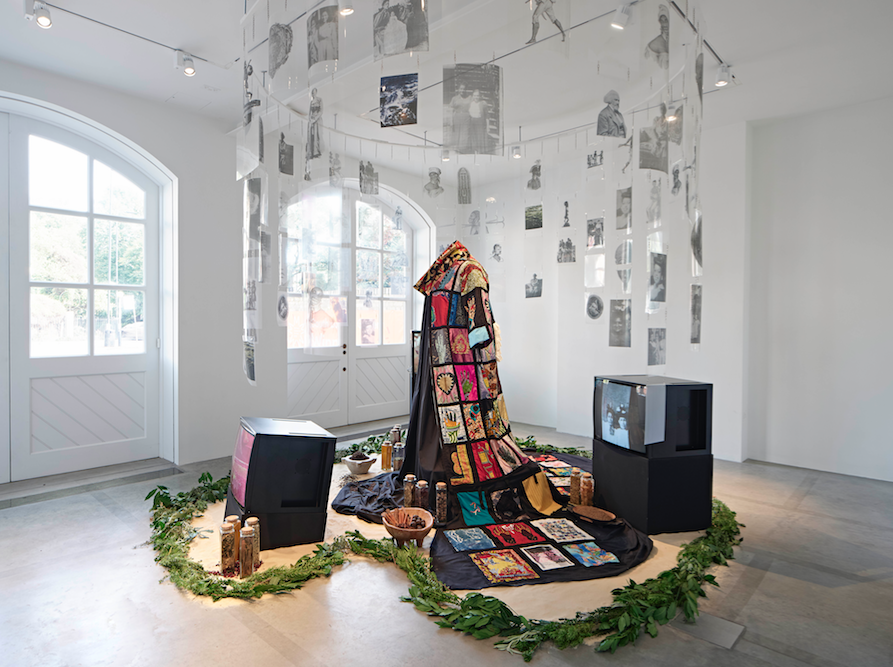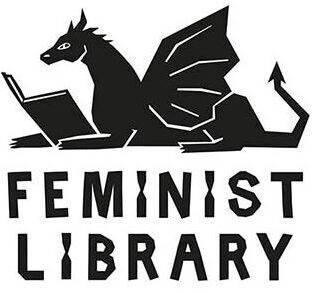Exhibition review – Rita Keegan: Somewhere Between There and Here
Rita Keegan: Somewhere Between There and Here
Exhibition review – Anna Pigott
On view until 28 November 2021
Fire Station Galleries, South London Gallery
Free

Photo: Andy Stagg
‘Somewhere Between There and Here’ marks Rita Keegan’s first solo exhibition in over fifteen years, bringing together examples from her multidisciplinary practice from the 1980s and 90s with newly commissioned works. The exhibition gives an overview of a practice which sits at the intersection of different disciplines, deeply connected with archiving in both historical and personal respects, and connects with Keegan’s involvement in feminist practice and the Black Arts Movement of the 1980s.
On the ground floor of the South London Gallery’s beautifully restored Fire Station building, Keegan has created a new installation, which brings together video works from across her career, a sculptural constellation of archival photographs, largely depicting enslaved individuals from Africa, along with a new, collaboratively-made, textile robe. This absorbing and complex installation is described by the artist as seeking to ‘personalise issues of the African diaspora’. The video works on view within the space place imagery from ethnographic collections and material documenting the enslavement of African peoples alongside deeply personal material, such as the artist’s own family photographs, provided her sister, who Keegan describes as the ‘family archivist.’ The ‘official’ history found in highly problematic collections is brought into dialogue with the intensely personal. In the most recent work on show, Somewhere Between There and Here, 2021, created for this exhibition, we hear the artist speak, describing the process of making the work and giving a powerful sense of her presence.

Rita Keegan, Trophies Revised 2021
Photo: Andy Stagg
At the centre of the installation is a ‘ceremonial robe’ created to fit Keegan’s own body. Incorporating wax print fabrics created by Europeans for African consumers, still widely produced today, the garment is a patchwork, a ‘social fabric’ of patches the size of A4 sheets of paper, each created by collaborators invited by Keegan to participate. This collective work is in itself a form of archive – one which is collective and collaborative, and one that is intimate, made to be worn next to the skin and to be animated by the body.
The installation is also a multi-sensory experience, incorporating not only video and sound, but scent, through using spices and herbs such as bay, rosemary and sage. These commodities are used by the artist as representative of global trade and of colonialism – once again history becomes an embodied experience as scent is used to conjure it in us.
In the upper galleries, examples of Keegan’s ‘copy art’ can be seen – composite portraits made using a photocopier while the artist was part of a co-operative print shop in the 1980s. The artist’s inventiveness is made evident in these works, created using a cheap and accessible medium to her at the time, they show her experimentations with colour, combining reproduced images of people with drawing and pattern which once again recalls textile printing. Fabrics recur elsewhere in the form of Kente cloth, ceremonial Ghanaian fabrics which are placed alongside photographs drawn from Keegan’s family history. Textiles permeate the show, contributing to the tactile quality of her work across its different media.
The exhibition coincides with the publication of Mirror Reflecting Darkly. Published by Goldsmiths Press, the book features essays from a number of contributors (including Keegan herself) documenting Keegan’s life, practice, and her contribution as curator of the Women of Colour Index, a 1987 initiative documenting Black and Asian women artists within the Women Artists Slide Library – now the Women’s Art Library at Goldsmiths in South London. Copies of the book are available from the South London Gallery bookshop and are also on view to browse within the exhibition. The publication, along with the exhibition, offer us many points of entry to learn about this fascinating and multi-layered artist, archivist and activist.
